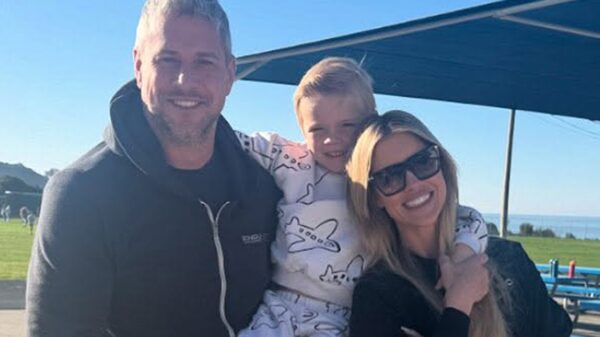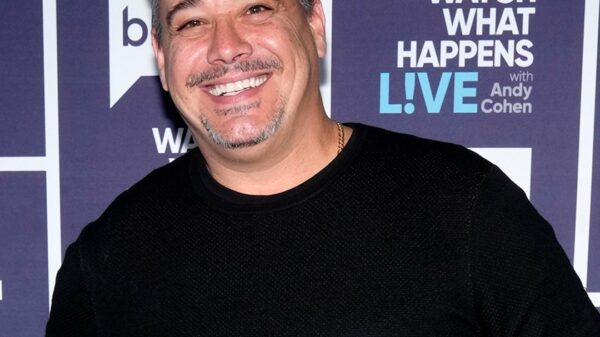- A Toronto content creator went viral after sharing how a sophisticated scammer impersonated her bank’s fraud department, eventually taking all of the money from her checking account and maxing out her credit card
- The 35-year-old says she “never thought” it would happen to her, and felt like she did all the right things initially
- In an interview with PEOPLE, she says she went public so that other people could learn how to spot the signs of a scam
A Toronto woman who was scammed out of nearly all her money by someone impersonating a bank employee is taking to TikTok to warn others that it could happen to them.
Content creator and staffing professional Courtney, 35, tells PEOPLE “it’s really scary” how sophisticated schemes such as the one she encountered have become.
“Like so many people, as a millennial, I’ve always said, ‘Oh it will never happen to me. I know the things to look out for, I know the questions to ask.’ But it’s gotten a lot more sophisticated,” she says.
It was a stressful work day in late January, she adds, when her phone was “blowing up” in between meetings.
“I was getting call after call after call,” she says. “I Google the number and I see that it’s the same number on the back of my credit card. So on the third time that they called, I picked up.”
The man on the other end of the line said he was calling from her bank’s fraud department, offering “the usual spiel” that comes with a bank phone call — that the call will be monitored and recorded, for instance.
He told her there were pending charges flagged as suspicious on her checking account. “One was for a flight and one was for women’s shoes and they were out of Singapore, and they were for over $2,000,” she says.
So she told him the charges were indeed fraudulent. That’s when he walked her through her other recent charges — which were legitimate.
“I still can’t figure out how he got that information,” she says. “But he started going through my actual transactions and I was like, ‘Yes that’s me, yes that’s me,’ I was looking at my statement, too.”
The man then told Courtney he would cancel her card and send her a new one – standard practice when it comes to fraudulent charges at most financial institutions.
“He said that, because of the amount that the charges were for, he had to work with the two merchants to get them reversed,” she explains. “I thought that was a little strange, but at the same time, I’d never gotten fraudulent charges that were that high before.”
The man then told Courtney to stay on the phone while he sent her a code that would help the merchants verify her information. She got the code via text message and gave it to him without realizing that it was actually the multi-factor identification code needed to access her bank account.
“After that, he was already in my accounts, emptying them and making charges on my credit card and then transferring all my money from my checking and my savings,” she says. “But he was very calm and very good. And I thought I asked the right questions, you know, I asked him for his full name, his employee ID, his branch, all of that.”
She continues: “And even when I was high stress in the call, like, ‘Oh my God, I have these charges,’ he was very good at calming me down and ensuring me that he would help get it all sorted.”
At the end of the call, the man told Courtney he had changed her online banking password, giving her a new username and password that would “help prevent any further security breaches.”
But after they hung up and she tried to log in to her account, the new username and password didn’t work.
“I called the number that was on the back of my card — the same number he had called from — and I asked, ‘I need you to just tell me, is my money still in my account?’ And they said no.”
At that point, Courtney immediately spoke to someone who was actually in the bank’s real fraud department, and later went to her local police station.
“The police said they see this happen multiple times a day, every single day,” she says, explaining that the scammers used a process known as ID spoofing to trick her caller ID display into showing false information. That’s why it looked like it was her bank calling and one of the reasons Courtney trusted the man on the other end of the line.
Later that night, Courtney went public with her story, telling PEOPLE: “I was so scared and so distraught and so traumatized … I kept running the conversation with this guy over and over in my head, thinking like, how, how did this happen? I never in a million years thought that something like this could happen to me. So I said, I need to get this story out there because I can’t let this happen to anybody, whether they’re my age, whether they’re older.”
In a tear-filled video uploaded to TikTok just hours after the scam took place on Jan. 30, 2025, Courtney shared the story, saying, “Today I was the victim of phone fraud.”
In the caption, she wrote, “All of my money is gone. My chequing, my savings, all of it gone.”
In a follow-up video, Courtney implored others to be mindful when receiving phone calls or messages from someone purporting to be their bank — even if the contact information appears legitimate.
Explaining the importance of calling a bank’s fraud department to report the scam, Courtney added that compiling evidence of the scam is also key.
“Document whatever you can — screenshots, phone recordings — save that,” she said, adding that those worried about a scam should also try and go to a physical branch of their bank.
“If you were locked out of your online banking account like I was, your branch will help you get back in with a new client card and set a new password,” she said.
She added that reporting it to a local police department is also important, as authorities can further investigate.
Speaking to PEOPLE, the content creator says the comments and messages she’s received since going public with her story show firsthand how prevalent these scams can be.
“There were people that were sympathetic, there were people that were hating, and then there were people that were saying, ‘Oh my God, this has happened to me, too.’ I literally heard from thousands of people that this happened to them, which is mind-blowing to me.”
Fortunately for her, the bank was able to reinstate all of her accounts — with the money lost from her checking account coming back about three business days later, and the charges on her credit card reversed after a week.
Still, she warns others that similar scams are sophisticated, offering a tip: “If you get a call, even from a number that seems legitimate, hang up and call the number yourself.”
“I feel like there should be better safeguards in place to protect consumers, but at the same time, technology is evolving so quickly, so people just need to be careful,” she adds. “I hope my story helps others. Even if I can help one person, then I’ve done my job.”
Read the full article here










































